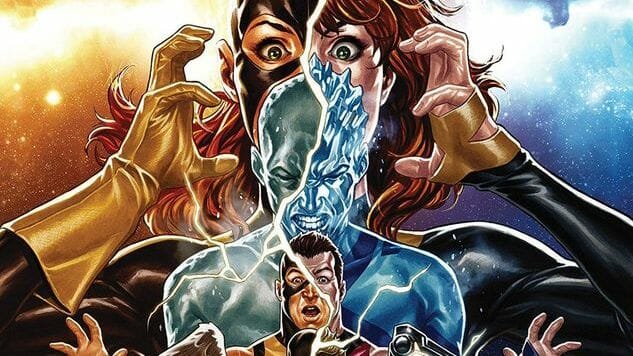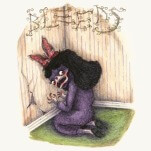Infinity Wars Proves That Iceman’s Painful Extermination Fate Could Have Been Avoided
Another Marvel Event Conclusion Offers an Alternative to Bobby Drake's Difficult Decision
Main Art by Mark Brooks
This post contains spoilers for Extermination #5 and Infinity Wars #6.
Yesterday, I wrote an unusually personal (for me, anyway) reflection on Marvel Comics’ Extermination #5 and the time-displaced Original Five X-Men. I do recommend reading my extended thoughts before checking out the addendum below, but I’ll summarize for those with more pressing matters: Six years ago, Brian Michael Bendis brought the five original X-Men—Cyclops, Jean Grey, Angel, Beast and Iceman—from their teenaged pasts into the present day. What seemed like a finite premise lasted more than half a decade and included massive developments like the younger Iceman being forcibly outed as gay, which in turn outed the older Iceman. While the way the Icemen came out is still controversial, this revelation resulted in two solo adult Iceman series written by Sina Grace, a gay creator, and dozens of issues featuring the younger Iceman enjoying his newfound openness and even finding young love with another super-powered teen.
This week, the final issue of the Extermination mini-series by Ed Brisson and Pepe Larraz hit stands, closing the “time loop” by sending the “O5” back in time and locking away their memories until the present day—a move that required the younger Iceman to willingly go back in the closet throughout his teen and early adult years. It’s a tidy way to preserve the adventures the O5 experienced while also removing any questions about how their memories of the present would affect their life paths. But Iceman’s sacrifice is almost unconscionable to really consider, especially if you’re a queer reader, and fans across the internet expressed their frustration and pain over Marvel’s decision to force the younger Bobby Drake back into the closet.

Extermination #5 Interior Art by Pepe Larraz & Marte Gracia
I stand by my initial assessment that, while I found the move incredibly depressing, I’m too jaded by superhero comics to consider it malicious on behalf of Brisson or Marvel Comics. Marvel, like its chief rival DC Comics, has often faltered when it comes to consistent and positive LGBTQ+ representation, but I am willing to accept that this painful, borderline offensive slight to Bobby Drake was, in their eyes, a necessary evil on the road to cleaning up X-Men continuity. Much of the last year in the X-Men line has focused on restoring older status quos, with the returns of (adult) Jean Grey, Professor X, Multiple Man, Banshee, Wolverine, Psylocke’s white body, Jubilee’s non-vampiric powers, Rogue and Gambit’s relationship, a recognizable New Mutants lineup and, in the very same issue that sent the O5 back in time, (adult) Cyclops. The upcoming Age of X-Man line-wide event is poised to massively, seemingly temporarily shake up the mutant corner of Marvel before some assumed new, new era.
Reading another major Marvel event conclusion out this week, though, cast the decisions of Extermination #5 in a different, less favorable light. Infinity Wars, launched around the release of the massively successful Avengers: Infinity War film, is the finale to writer Gerry Duggan’s tenure with Marvel’s cosmic characters. His initial Guardians of the Galaxy series with Aaron Kuder is easily the best run those heroes have seen since they rose to Marvel Cinematic Universe stardom, and the Infinity Countdown event that preceded Infinity Wars ably continued Duggan’s strengths with the GotG cast, buoyed by excellent art from Kuder and Mike Hawthorne. Infinity Wars, on the other hand, stumbled out of the gate with overly stiff, difficult-to-read artwork from Mike Deodato, Jr. and a plot that includes Gamora using the Infinity Stones to cut the universe’s population in half…by combining every hero and villain with another hero or villain in goofy amalgamations.
-

-

-

-

-

-

-

-

-

-

-

-

-

-

-

-

-

-

-

-

-

-

-

-

-

-

-

-

-

-

-

-

-

-

-

-

-

-

-

-











































